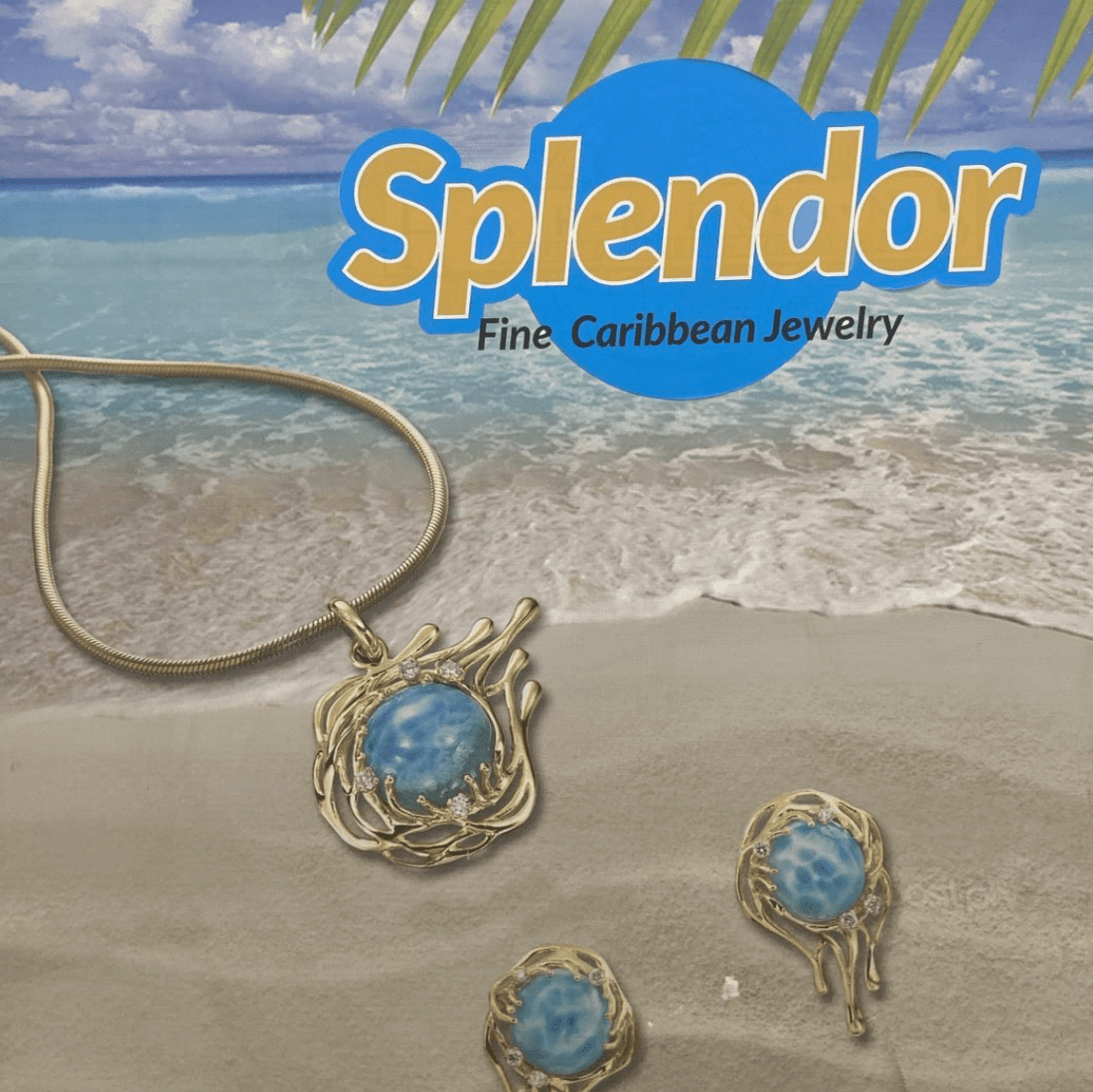
The Gems Of The Dominican Republic

Larimar
Larimar was discovered in 1916 & is the trade name for a rare blue variety of the silicate mineral pectolite found only in Dominican Republic, around the city of Barahona, the south end of the country. Its coloration varies from bluish white, light-blue, light-green, green-blue, turquoise blue, turquoise green, turquoise blue-green, deep green, dark green, to deep blue, dark blue and purple, violet and indigo and the larimar can come in many varieties and colour mixes.

Larimar is a type of pectolite or a rock composed largely of pectolite, an acid silicate hydrate of calcium and sodium. Pectolite is found in many locations, but larimar has a unique volcanic blue coloration, which is the result of copper substitution for calcium.
Larimar jewellery is sold to the public in the Dominican Republic, and elsewhere in the Caribbean as a local specialty. Most jewellery produced is set in silver, but sometimes high-grade larimar is also set in gold.

Quality grading is according to coloration and the typical mineral crystal configuration in the stone. Larimar also comes in green and can have red spots, brown strikes, etc., due to the presence of other minerals or oxidation. The more intense the blue colour and the contrast in the stone, the higher and rarer is the quality. The blue colour is photosensitive and fades with time if exposed to too much light and heat.
Dominican Amber
Dominican amber is amber from the Dominican Republic derived from the resin of the extinct tree Hymenaea protera.
Dominican amber differentiates itself from Baltic amber by being nearly always transparent, and it has a higher number of fossil inclusions. This has enabled the detailed reconstruction of the ecosystem of a long-vanished tropical forest. Like the piece below, which has a trapped lizard in it!

There are three main sites in the Dominican Republic where amber is found: La Cordillera Septentrional, in the north, and Bayaguana and Sabana de la Mar, in the east. In the northern area, the amber-bearing unit is formed of clastic rocks, washed down with sandstone fragments and other sediments that accumulated in a deltaic environment, even in water of some depth.

Blue Amber Chunk
Dominican amber can be found in many colours, besides the obvious amber. Yellow and honey coloured are fairly common. There is also red and green in smaller quantities and the rare blue amber (fluorescent). The blue amber reportedly is found mostly in Palo Quemado mine south from La Cumbre.

The blue colour of Dominican amber is caused by special molecules called aromatic hydrocarbons. These molecules absorb ultraviolet light and then emit it as blue light, making the amber glow blue under UV light. The most important of these molecules is perylene, but other aromatic hydrocarbons like fluoranthene and retene can also contribute to the blue colour.

The blue fluorescence is not uniform throughout the amber. It is strongest near the surface where UV light penetrates easily, and it gets weaker as the light travels deeper into the amber. This is because the light is absorbed and scattered by other molecules in the amber. This creates a captivating interplay of blue and yellow/orange tones, especially noticeable in thicker pieces.
The Studio: Splendor Larimar and Amber Factory
On my trip to the Dominican Republic, I got a chance to visit the jewellery store Splendor, which is found in the heart of Puerto Plata in the Dominican Republic. I got the chance to take a tour in the back of the studio to see the different materials that they use in the jewellery work, as well as where their jewellers actually work.
Splendor, like many other jewellery stores in the Dominican Republic, cut their own stones to make their jewelry with. The pieces created here are very unique and are designed by a local jewellery designer to capture the essence of the natural materials found in the Republic. With focuses on larimar, amber, and conch shell, their designs are whimsical and have the feel of the Caribbean.

For my tour, I got the chance to talk with the jewellers who work in the studio. I didn't take pictures of their benches because that tends to be a very personal thing for most bench jewellers, but they look pretty much like any other working bench jeweller's bench! The preferred tools and equipment might be different from one place to the next, but walking into their workshop felt like going home again.



What most customers would have not noticed or realized, is that many of the designs are half created directly in metal, AKA forged, and half of the designs are wax that are cast in silver or gold and then the stones are set into the casting. The forged silversmith jewellery designs tend to be more for unique stones the design is created around the stone itself. Wax castings are good for standardized size stones which they will cut the stone to fit rings, pendants, earrings or bracelets.
All in all, I found a beautiful pieces were well worth the visit to the studio. It was also lovely to talk to the designer and compare notes about jewellery creation, and I look forward to going back the next time I'm in Puerto Plata.
Thanks for reading,



